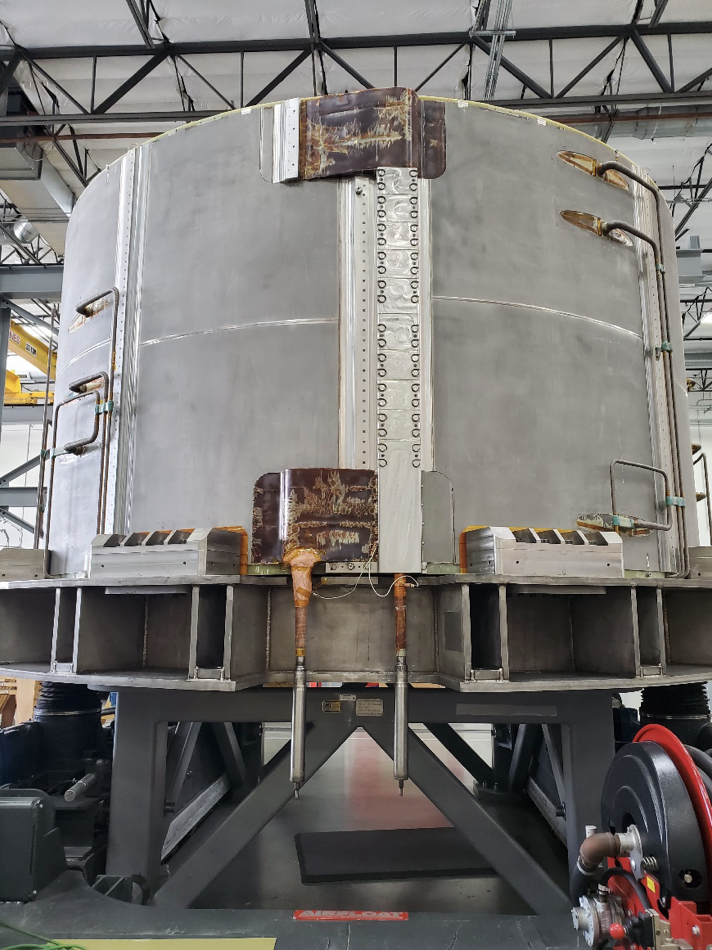The world’s largest experiment in fusion power is about to have its magnet installed, following the announcement that all components have been completed.
Nuclear fusion powers the Sun and other stars, but they achieve the vast forces required to push atoms together with gravitational pressure unachievable on Earth. Therefore, alternative forms of pressure or temperature are required.
Fusion can be achieved briefly on a small scale, but this requires putting in more energy than one gets out, which isn’t really the point.
Some countries and companies think they have found shortcuts that will allow commercial fusion to be achieved on a modest scale, but claims like this have come to nothing before. Instead, more than 30 countries have collaborated in going big, building the giant ITER reactor they expect will prove what is possible.
Like most projects on this scale, ITER (International Thermonuclear Experimental Reactor) is years behind its original schedule and many times over budget, but it is about to complete a crucial stage with the installation of the sixth and final module of the Central Solenoid.
Solenoids are conducting coils that generate a magnetic field inside, which can be enhanced with a metal core. The Central Solenoid will combine with the Poloidal Field Magnets to hold ionized hydrogen within a donut shape, known as a tokamak, while it is heated to 150 million degrees Celsius (270 million degrees Fahrenheit if you must know).
At these temperatures it is expected that the protons that were once the nuclei of hydrogen atoms will fuse together to form helium nuclei, releasing heat in the process as mass turns to energy.
All going well, 50 megawatts of power will be put in to heat the hydrogen, and 500 megawatts will be released. That sounds like an outstanding return on investment, and eventually it is hoped the process will be self-sustaining, with new fuel heated by the output of previous batches. However, it is important to remember that the energy released still needs to drive a turbine to produce electricity, and a great deal of it will be lost in the process.
Moreover, whatever electricity is made needs to outweigh not just what went into providing the original heat, but the considerable amount required to build the reactor, Central Solenoid included.
To get an idea of how much that is, consider that the Central Solenoid alone weighs about a thousand tons, and of course the building that houses it is far larger. The Solenoid will produce a magnetic field 280,000 times stronger than the Earth’s, storing 6.4 gigajoules of magnetic energy.
While the fuel will be heated to temperatures 10 times hotter than the center of the Sun, the magnet needs to be kept cold enough for helium to liquify (-269°C, -452°F, or 4.5 K) to retain superconductivity.

The sixth module of the Central Solenoid. When combined with the five other completed modules, the Central Solenoid will form the ITER tokamak’s center and co-create the pulsed magnet system.
Image credit: General Atomics/ITER
Whether ITER will eventually be judged as a wise investment towards the energy of the future, or an expensive distraction from a world powered mainly by solar cells and batteries, it represents a model of global cooperation. Based in France, it not only includes the members of the EU (and UK), but also brings in scientists and funding from China, the United States, India, Japan, South Korea, and Russia.
“What makes ITER unique is not only its technical complexity but the framework of international cooperation that has sustained it through changing political landscapes,” said Pietro Barabaschi, ITER Director-General, in a statement. “This achievement proves that when humanity faces existential challenges like climate change and energy security, we can overcome national differences to advance solutions. The ITER Project is the embodiment of hope. With ITER, we show that a sustainable energy future and a peaceful path forward are possible.”
Even many of the companies claiming they can achieve fusion on a smaller scale are relying on knowledge transfers from the ITER team.
Each ITER member is responsible for a different component, and the Central Solenoid is the US’s contribution, along with the exoskeleton that will support it.
Fusion power has become something of an exemplar of a technology that has repeatedly failed to meet predicted timelines. ITER is not expected to even start generating plasma until 2033, and sustaining a reaction will likely be much further down the track. After that, it will be longer still before imitations are supplying power to the people.
Source Link: The World’s Most Powerful Superconducting Electromagnet Will Soon Power The Quest For Fusion